We made a pretty stunning discovery in Halema`uma`u on Friday. Many months after the explosion that first opened the vent, we finally had visual confirmation of a roiling, active lava lake inside. Some of the scientists were over the vent in a helicopter, and they were able to get pictures and video of the lava. The best estimate is that it’s about 100 meters below the top of the vent. A few hours after the helicopter overflight, I went out with the gas geochemistry team to do Fourier transform infrared spectroscopy, or FTIR since the lava was visible.
The round part on top of the tripod is a telescope, and the box on top is the spectrometer. Anyway, since we were on the rim and right over the vent, I think perhaps a picture of the lava’s incandescence is in order.
Yep, that’s lava down there. That sort of glow just doesn’t normally happen during daylight hours. It was truly impressive to stand right above a lava lake. The noises were loud, tremendous, and unrelenting. If it wasn’t clanging with rock falls, it was making gas-rushing noises that sounded like jet engines. The earth is alive!
I have a special treat for all of you. My colleague Brian White was down on the other side of the vent from where I was, and he recorded video. You can finally hear the noises I keep writing about! Make sure your sound is turned on. It’s possible to see some of the incandescence as well.
Thanks Brian!
Saturday brought more impressive sights. I ventured up Mauna Kea with some colleagues to check out the view and do some stargazing. The name Mauna Kea means White Mountain, and that’s because it frequently has snow on its peak during winter. It stands 13,796 feet above the ocean, and is older than Mauna Loa and Kilauea. Mauna Kea is considered dormant, but not extinct. It’s also home to some of the world’s best telescopes and astronomical observatories.
Those are the Keck Twins, formally known as the W.M. Keck Observatory. They sit 85 meters apart at Mauna Kea’s summit and they each have a 10 meter primary mirror.
Those are cinder cones on the north flank of Mauna Kea. Since the volcano is in its “post-shield building” stage, it is literally pockmarked with cones like these.
This is the NASA Infrared Telescope Facility. It was posing nicely for me. It was built to support the Voyager missions.
This is the Caltech Submillimeter Observatory with its dome open.
I don’t think that one needs much explanation.
Here we have the moon, some stars, and the Subaru Telescope.
Last but certainly not least, I give you this:
Yes, that’s a laser issuing from one of the Keck Twins. It actually creates an artificial star that astronomers use to establish a relative location in the sky. I’m sure it does some other neat things, too, but I’m not aware of what they are, exactly. ***EDIT*** Check out Andrew Cooper’s comment at the end of this post for the actual use of the artificial star. He knows what he’s talking about!
If you’re ever in Hawai`i, sunset on Mauna Kea is definitely in order. Oh yeah…you might want to check out any available lava lakes, too.
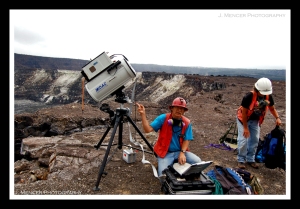
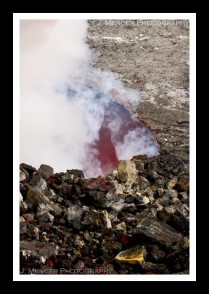
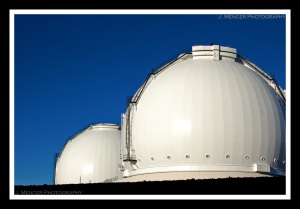
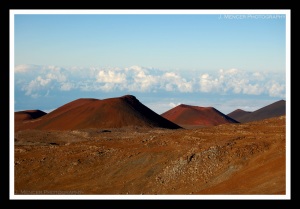
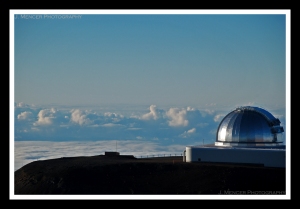
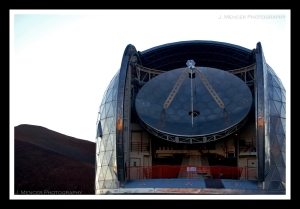
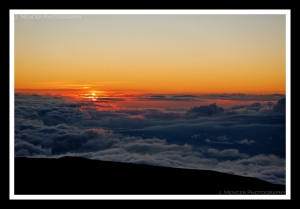
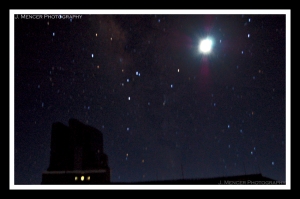
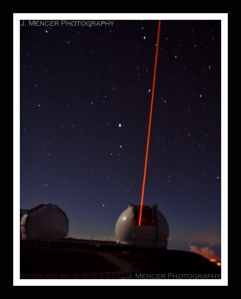
Glad to see you had a nice time on Mauna Kea. I love it every day I spend on the mountain. Reading your site is oddly similar, we both have jobs that allow us to work in spectacular places.
The only purpose for the laser is provide an artificial star for analyzing atmospheric distortions. This information can be used real time to correct the image by means of a small flexible mirror. The corrected image is then provided to the science instrument.
Sometime next year we should have a second laser in operation on Keck 1, busy modifying the system to accomodate that now.
Those pictures of the sunset are breath taking. You have Joe over here stunned, especially with the video. Its like nothing I’ve ever heard before. Did you have a hard time catching your breath up there?
Very nice and informative entry, honey. I’m learning a lot.
Jess that was amazing! I love that you can actually see the light from the lava. Stargazing must have been great. I know when i was in flag i went up to the observatory there and saw a lot of great things. Did you see any stars magnafied?